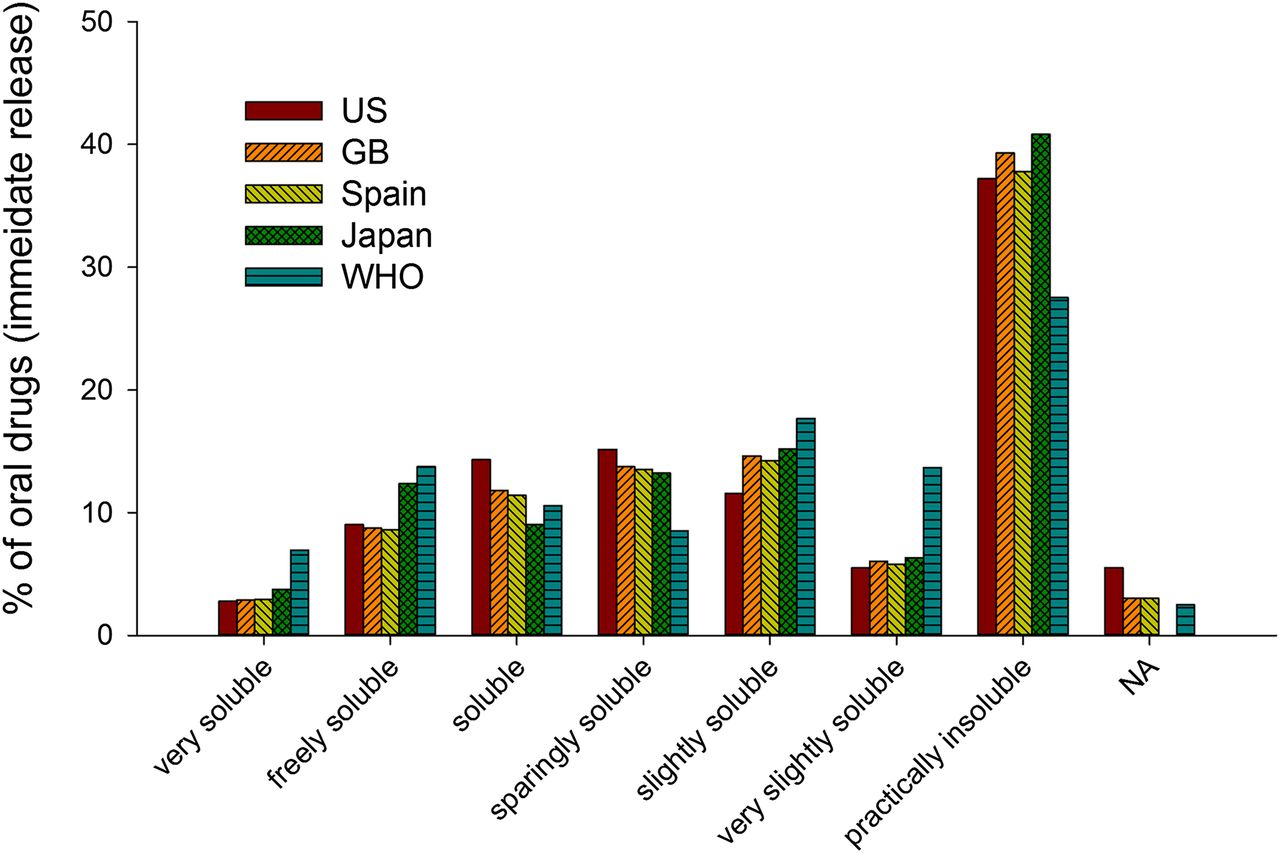

A total of 62−69.0% and 56−60% of the drugs on the four lists exhibited CLogP and Log P estimates, respectively, greater than or equal to the corresponding metoprolol value and are provisionally classified as high-permeability drugs. Metoprolol was chosen as the reference compound for permeability and Log P or CLogP. The Log P and CLogP estimates were linearly correlated ( r 2 = 0.79) for 187 drugs.

The provisional classification of permeability is based on correlations of the human intestinal permeabilities of 29 reference drugs with the calculated Log P or CLogP lipophilicity values for the uncharged chemical form. More than 50% of the oral IR drug products on each list were determined to be high-solubility drugs (55−59%). Drugs with dose numbers less than or equal to unity are defined as high-solubility drugs. Oral IR drug products constituted more that 50% of the top 200 drug products on all four lists, and ranged from 102 to 113 in number.
#Bcs class 1 drugs list pdf#
Libro De Biofisica Medica Pdf Files more. BCS Class Drug Solubility pH 1.2 Drug Solubility pH 6.8 Drug Permeability Preferred Procedure. The provisional classification is based on the aqueous solubility of the drugs reported in readily available reference literature and a correlation of human intestinal membrane permeability for a set of 29 reference drugs with their calculated partition coefficients.īCS From Theory to Applications in Product Development and Drug. Orally administered, immediate-release (IR) drug products in the top 200 drug product lists from the United States (US), Great Britain (GB), Spain (ES), and Japan (JP) were provisionally classified based on the Biopharmaceutics Classification System (BCS). BCS class III compounds (high solubility, low permeability)Īdapted from Wu and Benet (2005) Table 3.7.Download Anime Final Approach Sub Indo Mp4. BCS class II compounds (low solubility, high permeability) BCS class I compounds (high solubility, high permeability)Īdapted from Wu and Benet (2005) Table 3.5. The following tables (see Tables 3.4-3.7) contain lists of drugs that are categorized as BCS classes I to IV. BCS class IV compounds, in general, are problematic with both poor solubility and permeability. BCS class II and III drugs are not eligible for biowavers due to anticipated formulation differences in oral exposure.
#Bcs class 1 drugs list full#
Therefore, for BCS class I drugs, in vitro dissolution studies are thought to provide sufficient information to assure in vivo product performance making full in vivo bioavailability/bioequivalence studies unnecessary. Biopharmaceutics classification systemīCS CLASS I High solubility High permeabilityīCS CLASS III High solubility Low permeabilityīCS CLASS II Low solubility High permeability BCS CLASS IV Low solubility Low permeabilityīCS class I compounds (high solubility and permeability) are unlikely to show bioavailability/bioequivalence issues. BCS classifies all drugs into four categories as shown in Table 3.3. A drug is considered to have high solubility if drug substance at the highest dose strength for an immediate release formulation can be dissolved in 90%) or exhibits rapid movement through intestinal epithelia cells in vitro.

BCS classifies drugs according to their solubility and permeability. The BCS classification system is used to categorize drugs and serves to help anticipate whether drugs will have bioavailability/ bioequivalence problems.


 0 kommentar(er)
0 kommentar(er)
